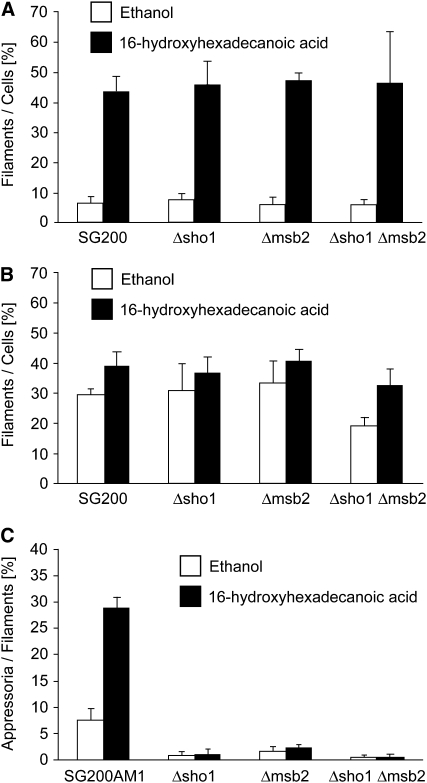Figure 5.
sho1 and msb2 Mutants Respond to Hydroxy Fatty Acid but Are Impaired in Their Response to Hydrophobic Surfaces.
(A) Filamentation in liquid: The indicated strains (below each column) were tested for their response to 16-hydroxyhexadecanoic acid. Cells were incubated in liquid culture (2% YEPSL) supplemented with either 100 μM 16-hydroxyhexadecanoic acid dissolved in ethanol (black columns) or with ethanol (white columns) for 18 h at 28°C. The average percentage of cells that grew filamentously was determined by microscopy analysis.
(B) Filamentation on a hydrophobic surface: Cell suspensions of the indicated strains in 2% YEPSL were sprayed on Parafilm M with 100 μM 16-hydroxyhexadecanoic acid dissolved in ethanol (black columns) or with ethanol (white columns) and incubated for 18 h at 28°C. After staining of fungal cells with calcofluor, the average percentage of cells that have formed filaments was determined microscopically.
(C) Appressorium formation on a hydrophobic surface: SG200AM1 and its derivatives indicated below the columns were sprayed on a hydrophobic surface as described in (B), incubated for 18 h at 28°C, and stained with calcofluor. After microscopy analysis, the average percentage of cells that expressed the AM1 marker was determined relative to the cells that had formed filaments.
In three independent experiments, >900 cells ([A] and [B]) or filaments (C) per strain were analyzed, and error bars indicate standard deviations.

